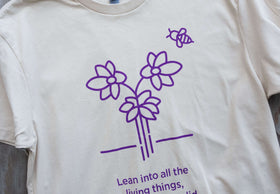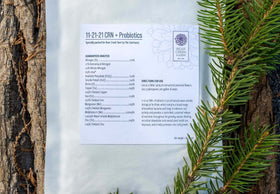Gardeners, enchanted by dahlias, with tubers carefully planted, nurture them into breathtaking blooms. Tubers, of course, like time capsules, each one a guarantee of the beauty that is to come. Plant a tuber, and you can expect the same magnificent bloom, year after year, a mirror image of its parent.
But the winds of change bring whispers of a new kind of magic - dahlia seeds. Unlike the predictable beauty of tubers, dahlia seeds are wild cards, and there is a burgeoning interest in them. This is a place where dreams take root, and every seed holds a universe of possibilities. Plant them, and you embark on a journey into the unknown. Each seed is a promise of a dahlia that has never been seen before, a unique creation that defies expectation.
The Heart of the Garden: Why Seeds Differ
Why do the tubers promise consistency, while dahlia seeds whisper of diversity? The answer lay in the heart of nature itself.
Tubers are like family heirlooms, passing down traits from generation to generation without change. A tuber from a 'Café au Lait' dahlia would always grow into another 'Café au Lait', each flower a perfect replica of the ones before. They are clones.
Dahlia seeds, however, are storytellers of diversity. Each seed carries a mosaic of genes, a blend of traits from its parents, and even from their ancestors. Planting a dahlia seed is like planting a mystery - you never knew exactly what story it would tell until it bloomed.
The Enchantment of Genetics
Why do dahlia seeds, unlike the faithful sunflower, lead to such a breathtaking array of flowers?
The answer lies in the essence of reproduction. Dahlias, through their seeds, engage in a genetic lottery, a mix of genes from two parents, bringing forth variations unseen in their forebears. Each seed is a unique combination of genetic material, ensuring that no two flowers are exactly alike. This genetic diversity is the result of cross-pollination, where bees and butterflies, unwitting matchmakers, blend the genetic material from different dahlias, creating seeds that are genetic mosaics of their parent plants.
The Constancy of Sunflowers
Contrast this with the sunflower, standing tall and uniform in its row. Sunflowers practice self-pollination, where a single flower's pollen fertilizes its own ovules. Pollen is transferred from its own anthers to their own stigma. This process minimizes genetic variability, leading to offspring that closely resemble their parent. The result is a field of sunflowers, each a mirror to the other, their seeds a testament to consistency. Of course, it is not just sunflowers, but also many types of annual flowers like marigolds, petunias, and impatiens that breed in the same way.
In the world of plants, there's a fascinating balance between genetic consistency and diversity. While some plants have been tailored for uniformity, others celebrate the surprises of genetic variation. What is so fascinating is you can be in control of this discovery process with nature. The dahlia itself can offer clonal propagation or nature's suprise with seeds. Each has its own charm and purpose in the garden.




